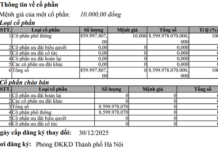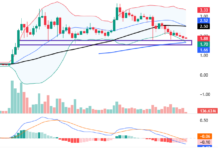
Last month, the Bank for International Settlements (BIS) warned that stablecoin growth could seriously erode public trust in currencies if left unchecked. Photo: Arnd Wiegmann/Reuters.
|
Central banks worldwide face a difficult choice: embrace stablecoins or develop alternative tech solutions as the US actively supports privately issued digital currencies and promotes the mainstreaming of this sector into formal finance.
|
Stablecoins are designed to maintain stable value, typically pegged 1:1 to the US dollar, and are commonly used for trading digital assets. Stablecoin usage has surged in recent years, fueled by expectations of instant value transfer. |
This week in Washington, politicians are pushing for a bill that would prohibit the Federal Reserve from issuing a national digital currency and establishing a legal framework for private stablecoins. For the Trump administration, these mostly USD-backed assets became a tool to assert the global dominance of the US dollar.
However, the Bank for International Settlements (BIS) warned last month that uncontrolled stablecoin growth could erode public trust in currencies, threaten monetary sovereignty, and make financial stability risks harder to manage. Policymakers also worry that stablecoins could be exploited as a vehicle for financial crimes.
To counter this trend, some countries are rushing to develop central bank digital currencies (CBDCs) to offer their citizens a safe digital payment option and help curb the rising “dollarization” wave. However, CBDC projects have faced significant challenges, and their effectiveness has been limited so far.
Christian Catalini, founder of the Cryptoeconomics Lab at the Massachusetts Institute of Technology, remarked, “We’re in a strange context where USD-pegged stablecoins hold a dominant position. Without regulation, this could lead to rampant dollarization.” He added, “But this isn’t a long-term equilibrium. Other nations realize this and are pondering whether to try to control this trend or harness stablecoins as a catalyst for financial innovation by developing domestic versions.”
Currently, about $250 billion worth of stablecoins are in circulation globally, mostly pegged to the US dollar. Investors often pour capital into these assets to hold funds before trading cryptocurrencies or using them for payments, as transactions take only a few minutes instead of days with traditional banks, and transaction costs are significantly lower.
Analysts predict the stablecoin market will continue to boom in the coming years. Citi Institute forecasts global stablecoin supply could reach $1.6 trillion by 2030 and even surge to $3.7 trillion with a more favorable legal framework in the US. However, this rapid growth also poses risks, as countries that fail to keep up may miss out on developing this new industry and lose their voice in shaping global rules.
Recently, the Bank of Korea (BOK) decided to halt its national digital currency project temporarily. Meanwhile, eight major commercial banks in South Korea are developing a won-backed stablecoin, reflecting a clear shift in priorities towards privately led digital solutions.
In the UK, the Bank of England (BOE) has also signaled a change in attitude, softening its previously cautious stance towards stablecoin issuers. Varun Paul, Fireblocks’ senior director and former head of fintech at the BOE, attributed this to concerns that the UK could fall behind in the global competition if the US legalizes and promotes stablecoins as a mainstream trend.
Mr. Paul also emphasized that the market has evolved significantly since the BOE’s first consultation on stablecoin regulation in 2023. While the technology was once on the fringes of the financial system, it has now become a booming force. The BOE recognizes that failing to adapt promptly will cause it to lose initiative in shaping the rules for this new market.
However, the BOE’s governor, Andrew Bailey, recently warned in The Times that stablecoins issued by large banks could pose financial stability risks. According to Mr. Bailey, a more sensible approach for the UK would be to gradually transition to tokenized bank deposits, reducing settlement times, rather than rushing to launch a new national digital currency.
In the Eurozone, many policymakers hope to establish the euro as a new reserve currency to challenge the US dollar’s dominance. The European Central Bank (ECB) is a key driver, strongly promoting the issuance of a digital euro. Since 2021, a digital euro project targeting retail customers has been underway, aiming to reduce Europe’s dependence on US tech giants that dominate cross-continental payment infrastructure.
However, the global picture for central bank-issued digital currencies (CBDCs) is still lackluster. While there are 69 retail CBDC projects in progress worldwide, only three have been officially launched, and two others have been discontinued, according to the Atlantic Council.
The most significant failure among CBDC projects is Nigeria’s. In 2021, the country confidently launched the e-Naira, but most citizens were indifferent and opted for USD-pegged stablecoins issued by private organizations. Consequently, the project was deemed a failure, forcing the Nigerian government to increase control over crypto exchanges, compromising the market’s freedom to develop.
According to Nitin Datta, Chief of UNDCIF (a UN agency for digital assets), one reason for the e-Naira’s failure was that it was merely a digitized version of the traditional domestic currency, which lacked public trust. He commented, “Nigeria was a free-market test case. Whether we like it or not, exchanges and stablecoins will continue to exist; we cannot entirely eliminate market activity.”
While not dismissing stablecoins’ potential, Ruth Wandhofer, Chair of the UK Payment Systems Regulator, emphasized that this asset class has yet to demonstrate its utility at scale. As she exemplified at a recent conference, a global CFO is unlikely to use stablecoins for substantial cross-border transactions due to significant currency conversion costs.
Ms. Wandhofer also pointed out that, in many countries, consumers lack basic financial knowledge, payment systems are limited, technology infrastructure is inadequate, and transparency is lacking. “Using stablecoins as an intermediary for deposits and withdrawals can sometimes incur higher costs than transferring money through Western Union,” she warned.
Additionally, she noted that as digital currency transactions increase, states may experience tax revenue losses due to difficulties in monitoring cash flow. “So, the UK and Europe will undoubtedly need to develop digitized versions of the pound and the euro in the future,” she concluded.
For these projects, Josh Lipsky, a senior director at the Atlantic Council’s Geoeconomics Center, believes the digital euro’s birth will be a decisive test. “If the digital euro succeeds, the Eurozone will demonstrate to the world that the public sector’s digitalization is feasible and worthy of becoming a global paradigm,” he emphasized.
Proposed Controlled Trial of Digital Assets and Cryptocurrencies at the International Finance Center
“The Ministry of Finance has proposed that the International Finance Centre in Danang will pilot a controlled experiment with digital assets and currencies. This cutting-edge initiative aims to position Vietnam at the forefront of the digital economy, leveraging the country’s strong technological foundations and innovative spirit.”
The Digital Asset Investment Frontier: Unlocking the Potential
Bitcoin has come a long way since its mysterious inception on October 31, 2008. In just 16 short years, it has evolved from a niche digital currency to a global financial powerhouse, with a market capitalization in the billions. But is Bitcoin’s remarkable growth simply a fluke, or does it signal a new era in the world of finance?
“Proposed Pilot for Trading Tokenized Securities on a Digital Asset Exchange”
“Techcom Securities (TCBS) is proposing a pilot program for trading tokenized securities on a digital asset exchange. This innovative approach to securities trading offers a host of potential benefits, including increased liquidity, improved price discovery, and enhanced access to capital. By leveraging blockchain technology and smart contracts, TCBS aims to revolutionize the way securities are traded, bringing greater efficiency and transparency to the market. This proposal marks a significant step forward in the evolution of capital markets, and we invite you to join us on this exciting journey.”
“The Evolution of Digital Assets and AI: Unlocking the Future of Finance”
The tech revolution, digital assets, blockchain, and AI are profoundly impacting the financial industry and unlocking new investment horizons in Vietnam, according to the Chairman of the Board of Directors of Techcom Securities Joint Stock Company (TCBS).









































